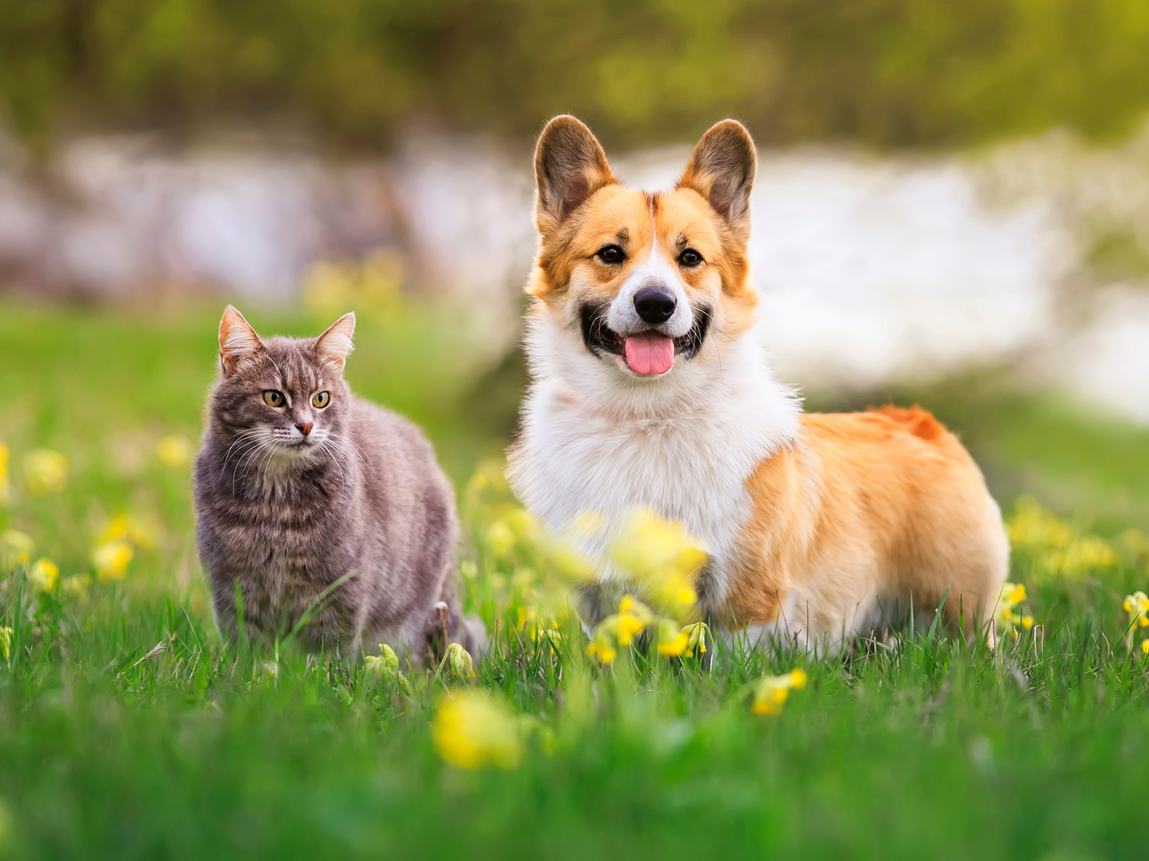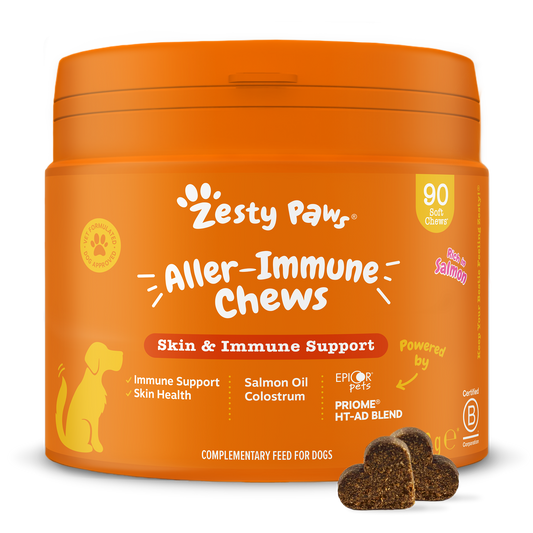Your morning routine used to include those blissful moments of running your fingers through your dog's silky coat or feeling the luxurious softness of your cat's fur during evening cuddles. But lately, something's different. Maybe their coat feels rougher, looks less vibrant, or you've noticed more hair on your clothes and furniture than usual. Perhaps you've caught them scratching more often, or that gorgeous shine they used to have seems to have disappeared.
These changes might feel gradual and easy to dismiss, after all, don't all pets shed? Don't they all scratch sometimes? But your pet's coat is actually one of the most telling indicators of their overall wellness, reflecting everything from their nutrition to their comfort levels in ways that often surprise pet parents.
What many pet parents don't realise is that up to 15% of dogs experience atopic dermatitis (one of the most common skin conditions) while up to 50% of cats deal with various skin concerns throughout their lives.
What's really happening beneath the surface
Your pet's skin is working around the clock, serving as their body's largest organ and primary defence system. It's constantly regenerating, producing oils, maintaining temperature, and creating that beautiful coat we love to admire. But this complex system depends heavily on getting the right nutritional building blocks to function properly.
Think of it like this: every hair follicle is like a tiny factory, and these factories need specific materials to produce healthy, shiny fur. When those materials are in short supply, the factories can't do their best work. The result? Dull, brittle hair, increased shedding, and skin that becomes more sensitive to environmental irritants.
This is where targeted support makes such a difference. Products like Zesty Paws Skin & Coat Salmon Oil are specifically formulated to provide these essential building blocks: omega-3s for skin comfort, omega-6s for barrier function, and antioxidants for protection, in forms that are easily absorbed and actually used by your pet's system.
The grooming clues your pet gives you
Cats are particularly good at showing us when something's not quite right with their skin and coat. Excessive grooming, creating bald patches, or seeming never satisfied with their cleanliness often indicates underlying discomfort. On the flip side, cats who suddenly groom less might be telling you their skin feels tender or uncomfortable.
Dogs tend to be more direct. Increased scratching, rubbing against furniture, or that distinctive way they nibble at their paws when skin feels irritated. Some dogs develop hot spots or areas they can't seem to leave alone, while others might just seem generally itchier than usual.
Why traditional approaches often fall short
Many pet parents try addressing coat and skin issues by switching shampoos, changing foods abruptly, or using topical treatments. While these can provide temporary relief, they often miss the underlying nutritional component that's crucial for long-term skin and coat health.
The skin barrier, that invisible protective layer, depends on specific fatty acids to maintain its integrity. When this barrier becomes compromised, everything becomes more challenging: environmental allergens penetrate more easily, moisture escapes, and the skin becomes increasingly sensitive.
The power of the right nutritional support
Here's where understanding your pet's specific needs becomes valuable. The fatty acids that support healthy skin and coat aren't just about omega-3s, though EPA and DHA from sources like salmon oil play an important role in overall wellness. Your pet also benefits from ALA from flaxseed oil, balanced omega-6s for proper barrier function, and antioxidants that help maintain coat health in various environments.
What makes ingredients like those in Zesty Paws Skin & Coat Salmon Oil particularly effective is how they work together. Vitamin E enhances the absorption and effectiveness of the fatty acids, while the combination of different oil sources like Omega 3-6-9s provides comprehensive support that addresses multiple aspects of skin and coat health simultaneously.
Creating visible improvements
Most pet parents start noticing changes in their pet's coat quality within 4 weeks of consistent nutritional support. Over time, many pets experience reduced scratching, less excessive grooming, and that lustrous coat quality that makes people comment on how healthy your pet looks.
The key is consistency. Skin cells have a natural regeneration cycle, and hair growth follows predictable patterns. Supporting these natural processes with steady nutritional input allows your pet's system to maintain healthy skin and produce better quality fur over time.
Supporting your pet naturally
Beyond nutritional support, environmental factors play important roles:
- Humidity and temperature: Maintaining comfortable environmental conditions helps prevent skin dryness and irritation.
- Gentle grooming: Regular brushing distributes natural oils and provides monitoring opportunities.
- Stress management: Chronic stress significantly impacts skin health, making a calm environment important.
- Clean surroundings: Regular cleaning of bedding and toys reduces exposure to potential irritants.
When to seek professional guidance
While nutritional support and environmental improvements can help maintain healthy skin and coat concerns, some situations warrant veterinary attention. Sudden changes in coat quality, persistent scratching that creates wounds, unusual odours, or skin changes that seem painful definitely deserve professional evaluation.
Your vet can help determine whether underlying conditions might be contributing to skin and coat issues, recommend specific approaches based on your pet's individual needs, and monitor progress to ensure your chosen support strategies are effective.
The ripple effects of healthy skin
Supporting your pet's skin and coat health creates benefits that extend beyond appearance. Comfortable skin means better sleep, less stress, and more enjoyment of normal activities like playing and cuddling. Many pet parents find that addressing skin and coat health improves their pet's overall quality of life in ways they hadn't expected.
Additionally, the same nutrients that support skin and coat health, particularly omega-3 fatty acids, also benefit cognitive function and the immune system. This means your investment in your pet's appearance is simultaneously supporting their mental sharpness and overall vitality.
Building sustainable habits
The most successful approach to maintaining healthy skin and coat involves creating easy, sustainable routines. Whether that's adding a daily oil supplement to food, maintaining regular grooming sessions, or simply being more observant about changes in your pet's coat quality, consistency matters more than perfection.
Remember, every pet is unique. Some may show dramatic improvements quickly, while others need more time to reveal the benefits of better nutritional support. The goal is finding what works best for your individual companion while maintaining realistic expectations about the timeline for visible changes.
By understanding what influences skin and coat health and providing appropriate support, you're investing in both their comfort and their confidence, helping them look and feel their absolute best.





